Different seasons require different types of nutrition and energy for birds. For example, they need high-energy food in winter to keep them warm. One type of bird feed that is particularly beneficial in winter is suet.
So, what is suet for birds? Simply put, suet is a bird feed made from animal fat, typically beef or mutton. It is a natural food source that is high in energy and a great option for active birds during the winter.
As you read on, you will discover the many benefits of suet for birds and how to effectively choose and offer it to your feathered friends. So, please keep reading to learn more about this bird feed and how to make the most of it.
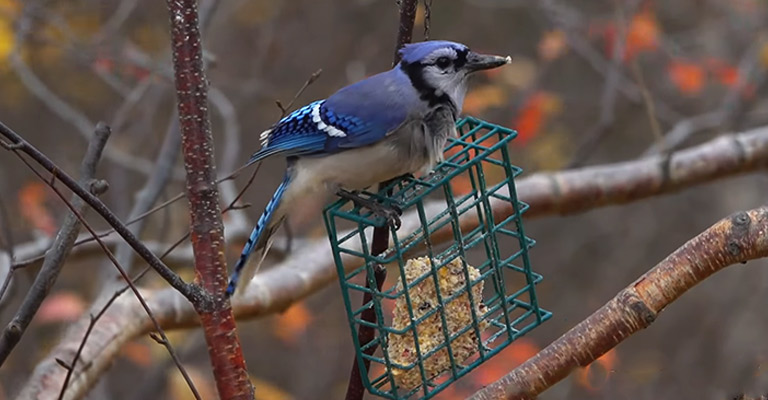
What is Suet for Birds?
As mentioned, suet is a bird feed made from animal fat, typically beef or mutton.
Suet can be offered to birds in various forms, such as cakes, balls, logs, or mesh bags. These forms make it easy to provide suet to birds in different ways.
Suet can also be offered in different flavors, such as fruit, nuts, or insects, to attract various bird species to your backyard.
The composition of suet can vary depending on the source of the fat and the specific recipe used to make it. Some suet may include additional ingredients such as seeds, nuts, or fruit to provide birds with extra nutrition.
Some may also include added vitamins and minerals. Homemade suet can also be made using different types of fat, such as lard or tallow.
How to Make Suet for Birds
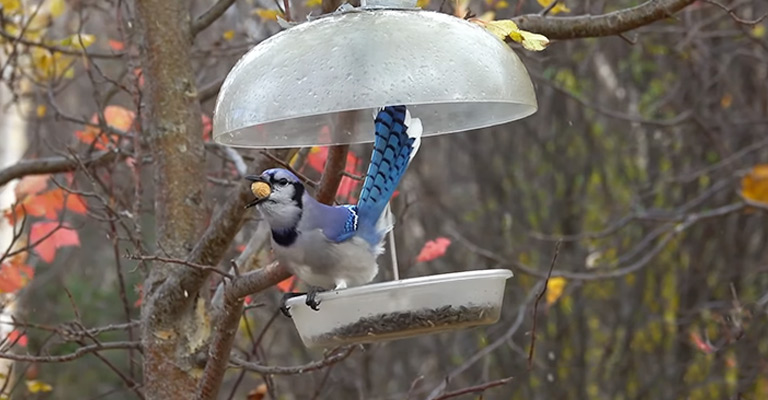
Making suet for birds at home is a simple and cost-effective way to provide food for wild birds in your backyard. Here is a detailed recipe for suet cakes that can be used in suet feeders or hung from trees.
Ingredients:
One cup of rendered beef fat or suet: Beef fat or suet is the main ingredient in suet cakes.
One cup of quick-cooking oats: Oats provide a good source of carbohydrates for birds.
One cup of cornmeal: Cornmeal is a good energy source and protein.
One cup of flour: It acts as a binder in the suet cakes.
1/4 cup of sugar or honey: They provide a source of energy for birds and also help to attract them.
Optional: seeds, nuts, dried fruit, or mealworms: These ingredients can be added to provide additional sources of nutrition and attract a wider variety of birds.
Instructions:
- Begin by rendering the beef fat. This can be done by heating it in a pan over low heat until it melts and the solids have separated.
- Once the solids have cooled and hardened, they can be removed and discarded. The rendered fat should be clear, with no solids or impurities.
- Mix the quick-cooking oats, cornmeal, flour, and sugar or honey in a separate mixing bowl. Mix well.
- Slowly add the melted beef fat to the dry ingredients, stirring to ensure everything is well combined. The mixture should be thick and sticky.
- You can add any optional ingredients such as seeds, nuts, dried fruit, or mealworms at this stage. Mix well.
- Once the mixture has cooled, you can shape it into balls or cakes.
- Ensure the suet cakes are not too big and heavy, as it can be difficult for smaller birds to feed on.
This recipe is just an essential guide; you can experiment with different ingredients and ratios to suit the birds in your area. But ensure you avoid using salted or processed meats when making suet. Also, avoid using oils high in polyunsaturated fats, as they can quickly become rancid.
How to Select the Ideal Suet for Your Feathered Visitors
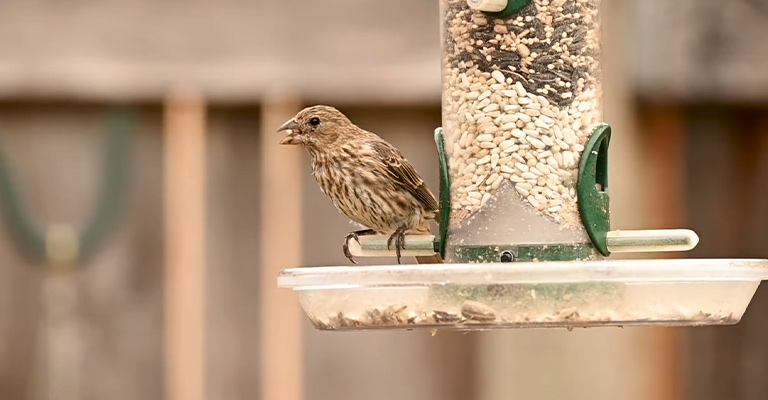
Here is how to know what kind of suet is best for your birds:
1. Consider the Season
In the winter, birds need high-energy foods to keep warm, so suet with a higher fat content is best. Rendered suet containing beef or pork fat is a good option.
During the summer months, suet with a lower fat content is more appropriate as birds do not need as much energy to keep warm. Hence, suet made with fruit or insects is a good option during the summer.
2. Consider the Bird Species
Different bird species have different dietary needs, so choosing a suet specifically formulated for the birds you want to attract is essential.
For example, a suit high in insects is ideal for woodpeckers. Suet cakes with fruits and berries are more suitable for thrushes and finches.
3. Suet for Different Feeding Methods
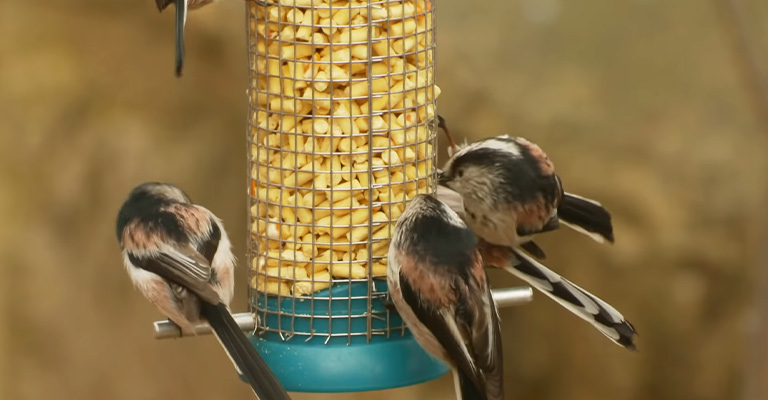
Several ways to provide suet to birds include suet cakes, balls, feeders, and plugs. Each method has advantages and disadvantages.
For example, if you plan to use a suet feeder, it’s best to choose a firm suet that will hold its shape in the feeder. If you plan to smear suet on a tree trunk or other surface, softer suet that is easy to spread is a better option.
4. Commercially Made Suet vs Homemade Suet
While commercially made suet can be more convenient, homemade suet can be more cost-effective. It allows you to tailor the ingredients to the specific needs of your birds.
Setting up Suet for Birds in Your Backyard
Here is how to go about it:
1. Choose the Right Suet Feeder
Various options are available on the market for selecting a suet feeder. Some popular types include:
Wire mesh feeders
These are the most common suet feeders and are relatively inexpensive. They allow birds to cling to the wire mesh while they feed, and the mesh design makes it easy for birds to grab onto suet chunks.
Wooden feeders
These are often made from cedar or redwood and can be more expensive than wire mesh feeders. They are durable and weather-resistant. However, they may not be as easy for birds to cling to while they feed.
Recycled plastic feeders
These are an eco-friendly option and are often less expensive than wooden feeders. Although they are not as durable as wooden feeders, they are still a good option for those seeking an affordable and sustainable choice.
When choosing a feeder, consider the size of the birds you want to attract and the type of suet you plan to use.
For example, a wooden feeder with larger openings may be the best choice to attract larger birds, such as woodpeckers. If you plan to offer suet cakes, a wire mesh feeder with smaller openings may be more suitable.
2. Place the Suet Feeder in the Right Location
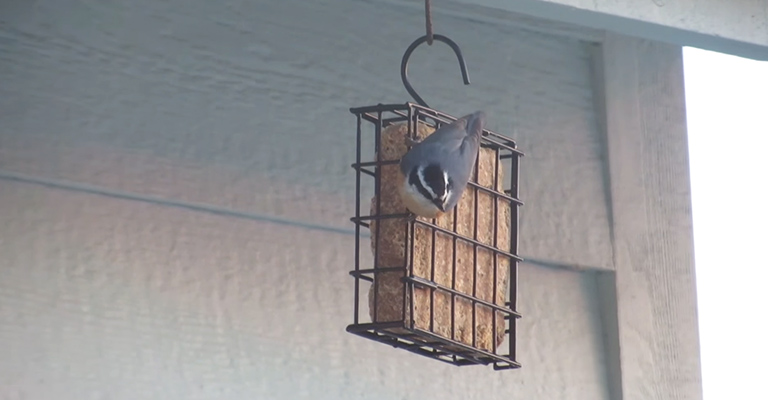
Suet feeders should be placed in a location that is easily accessible to birds but also offers some protection from the elements.
- A shaded area or one that is protected from strong winds is ideal in this sense.
- Also, ensure the feeder is at a height easy for birds to access. A good rule of thumb is to place the feeder at least 4-5 feet off the ground.
- Avoid placing the feeder near bushes or trees where predators such as cats or squirrels can easily access it.
- It’s also essential to place the feeder where you can easily observe the birds while they feed.
3. Offer Fresh Suet
Birds are attracted to fresh suet, so regularly replace the suet in the feeder. In warm weather, suet can spoil quickly. Hence, it may need to be replaced more often. A good rule of thumb is to replace the suet every 3-4 days or as required.
FAQs
Here are answers to common questions that will come up in the process:
Suet is a favorite food of many birds, particularly woodpeckers, nuthatches, chickadees, and jays. Other birds, such as cardinals, blue jays, and titmice, also enjoy suet. Suet can also attract insect-eating birds such as flickers, warblers, and vireos.
Suet can last 3 to 5 days when stored in a cool, dry place, but it should be checked regularly for mold or other spoilage. When offering suet to birds, please place it in a feeder that allows for drainage. Change it after every 3 days.
Conclusion
The above information has answered the question, what is suet for birds? It has also given you more details on preparing it, setting it up, etc.
Once you have set up your suet feeder and placed fresh suet in it, you have to sit back and enjoy the birds that come to feed.
Look for different types of birds and note when they visit your feeder. You may also want to consider keeping a birding journal to document the various types of birds you see.